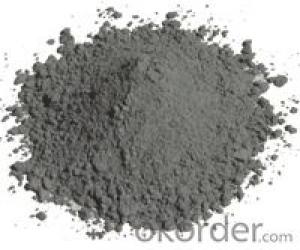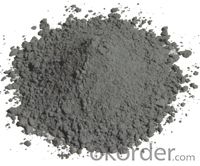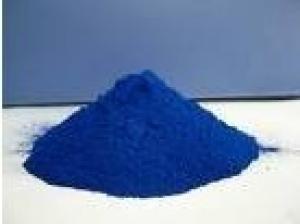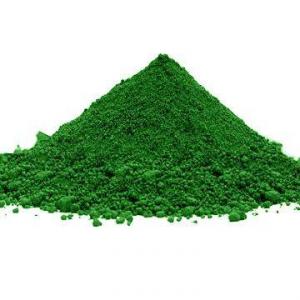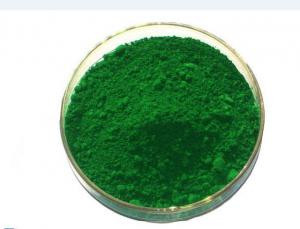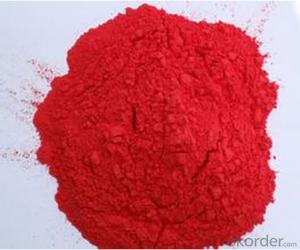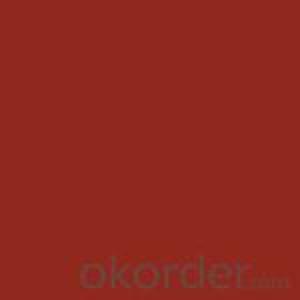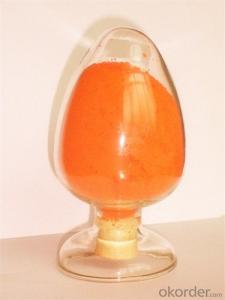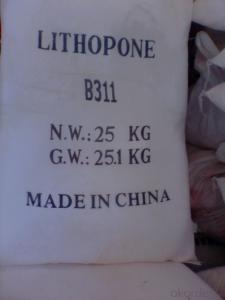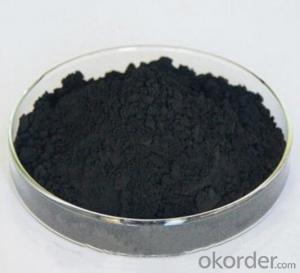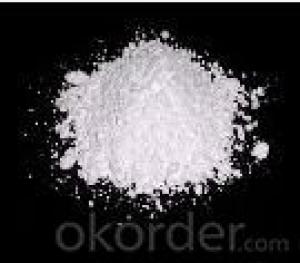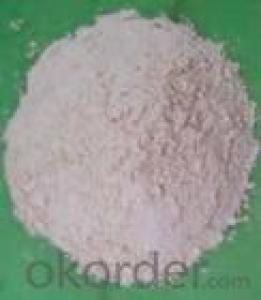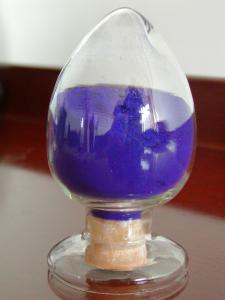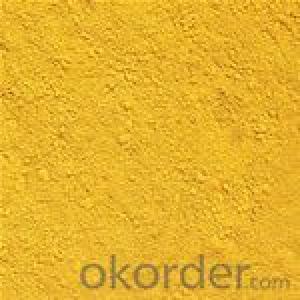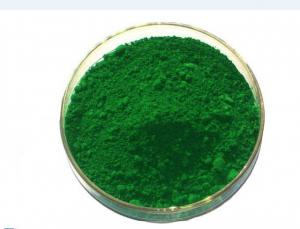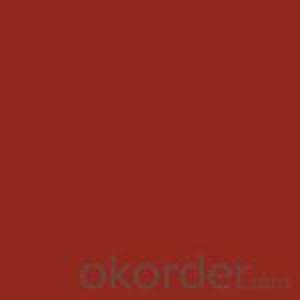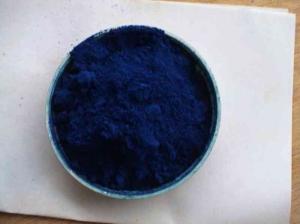Iron-titanium compound powder 505
- Loading Port:
- China Main Port
- Payment Terms:
- TT OR LC
- Min Order Qty:
- -
- Supply Capability:
- -
OKorder Service Pledge
OKorder Financial Service
You Might Also Like
Quick Details
Use: This product can partly replace zinc powder to produce zincrich primer and can completely replace micaceous iron oxide, zinc phosphate and other antirust pigments to produce various types of antirust and heavy anti-corrosion paints.
Performance
1. Compared with other antirust pigments, it has significantly improved dispersibility, paint stability, anti-sinking property and antirust performance.
2. 505 composite antirust pigment, significant cost performance, can greatly reduce the production cost of antirust paint.
3. 505 composite antirust pigment does not contain heavy metal and is a completely environmentally friendly non-toxic product. It is easy to use by spraying or brushing and is an ideal new antirust product.
Specifications
Technical index
Item Index Appearance Silver-gray powder Sieve residue (sieve mesh-400)%≤ 2 Density 27℃ g/cm3 3~4 Oil absorption g/100g ≤ 10~25 Water solubles g/100g ≤ 1 Volatile matter (105℃)%≤ 1 Aqueous suspension PH value 7.0~9.5 Phosphorus pentoxide% ≥ 18
Using method
Produce based on conventional antirust paint production process.
Recommended dosage
Recommended dosage is 20%-40%.
Packing
Double-layer plastic packaging, 25kg/bag - 40kg/bag.
Storage
Keep ventilated and dry, it can be stored for a year without deterioration
- Q: (Explain what happens when a pigment molecule is struck by electromagnetic radiation in the visible light spectrum.)
- pigments are molecules that absorb electromagnetic radiation. For example, the chlorophyll pigment in plants absorbs blue and red light, which is why they reflect green light (since green is the color not absorbed). Another example is melanin, which is the pigment that darkens the skin of people. Melanin absorbs UV to protect the skin. A pigment molecule struck by EM radiation in the visible region may absorb some of the light depending on what pigment it is.
- Q: Please and thank you, it doesn't say so on the website.
- Mac Pigment Ingredients
- Q: How do you use pigments?
- you can use it in a few places such as your lips, cheeks, eyes
- Q: Please and thank you, it doesn't say so on the website.
- Mac Pigment Ingredients
- Q: i was thinking of this all day long and then i thought of posting this question for you to help me sort it out
- plant pigments are of types---- LUCOPLAST- colourless, found in roots, collect food.,,, CROMOPLAST-- Of difrent colour (not green), in flowers atract insect for polination, in fruits atract animals for seed dispers,,,,CLOROPLAST-- Convert light energy to chemical energy, in leaves and otner parts....
- Q: what is pigment?
- a pigment has some kinds like biological pigment and arsenic pigment. i dont know much about the arsenic pigment. i would just tell something about the biological pigment. in biology, pigment is any material resulting in color of plants or animals cells. many biological structures like eyes,fur,hair and skin contains pigments like melanin in specialized cells called chromatophores.
- Q: Can someone describe the role of accessory pigments in photosynthesis?
- help the primary pigments gather sunlight and adds color to the plant
- Q: i want to get mac melon pigment but i dont know what other eyeshadows to pair and blend it with. im looking for an everyday look. also what brushes to use with pigments?
- With the Melon pigment, I would recommend using warm, chocolate copper, bronze types of colors. It will provide a nice contrast to the melon while giving your eyes some added depth and definition. As far as brushes go, I like using the 252, large shader brush. This brush picks up pigment nicely and it has nice compressed/dense bristles so you can manipulate and lay the pigment down with greater ease. I like the #286 The dual fiber blending brush for pigments as well. It's made of natural fiber and synthetic fiber. This is a great brush because you really get 2 brushes in 1. With this 'blending' brush you can also use it for targeted color deposits and the synthetic fibers won't suck up what you just laid down and you will get a flawless, beautifully blended eyeshadow application.
- Q: how to prepare coloured pigments?
- Chemically, pigments fall into a number of large groups, but these are often arbitrarily divided into two major groups. The first group comprises pigments that contain nitrogen; it includes hemoglobins, chlorophylls, bile pigments, and dark-colored pigments called melanin, widespread in many animal groups and the chemical that is responsible for variations in the color of human skin. Related to melanins are the indigoids, of which the well known plant pigment indigo is an example. Riboflavin, which is also known as vitamin B12, is one of a number of pale yellow to green pigments that are produced by several plant groups. The second group is formed of pigments without nitrogen. Carotenoids are members of this group, as are the important plant pigments called flavonoids. In leaves, flavonoids selectively admit light wavelengths that are important to photosynthesis, while blocking out ultraviolet light, which is destructive to cell nuclei and proteins. Flavonoids are also important in flower color, in particular providing red and blue pigments. Bright fall colors are produced by the conversion of colorless flavonoids, called flavonols, into colored forms, called anthocyanins. Quinones provide many yellow, red, and orange pigments, including several useful dyes derived from insects that feed on plants containing the quinones. Cochineal, for example, is a red pigment obtained from the fat cells of scale insects that feed on cactus plants.
- Q: We see pigments everywhere in products. They make a variety of things we see today. Where does it come from? Do they actually take a red rose pedal, grind the color and designate it as the color red?
- Pigments come from many sources, and often the name of the color indicates the source. For example, lead white, titanium white and zinc white are lead, titanium and zinc oxides. Cobalt blue is a compound of cobalt. Many pigments are found in nature from minerals, plants and insects. Many more are produced in the laboratory and have chemical names such as the analine dyes.
Send your message to us
Iron-titanium compound powder 505
- Loading Port:
- China Main Port
- Payment Terms:
- TT OR LC
- Min Order Qty:
- -
- Supply Capability:
- -
OKorder Service Pledge
OKorder Financial Service
Similar products
Hot products
Hot Searches
Related keywords
